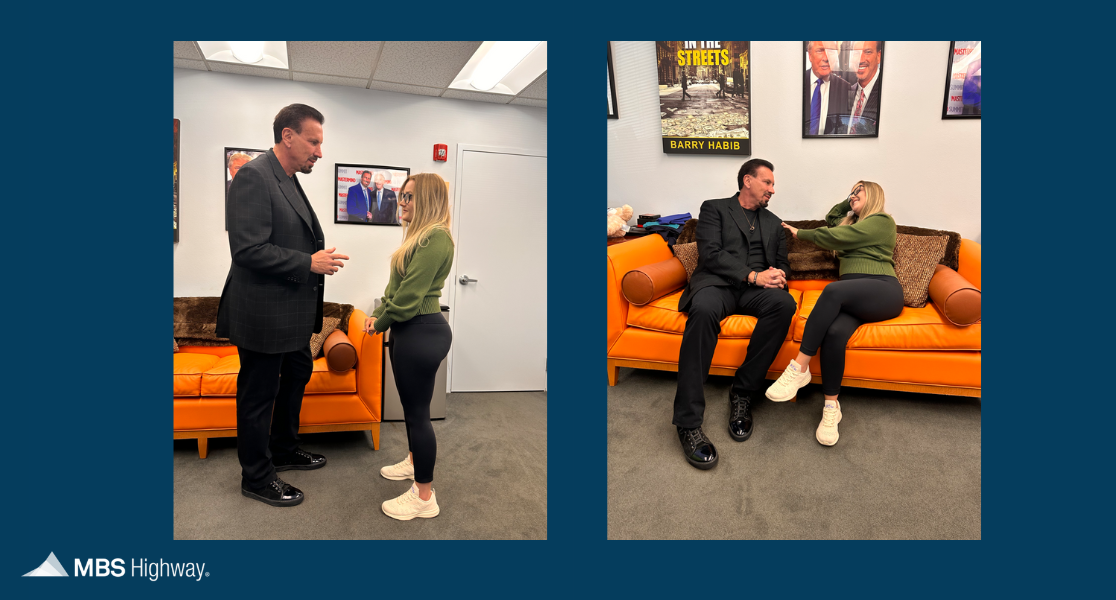Opening Your Eyes to Be Heard

By Megan Anderson, Director of PR
I want you to think back to a time when you were nervous about making a good first impression. Maybe it was for a job interview, a first date or meeting your significant other's friends and family for the first time. Did it go as planned? Or did you leave confused about why you didn't get the job or not everyone approved of the relationship?
Now think about when you have been in the opposite position, such as hiring someone or meeting your child's new boyfriend or girlfriend for the first time. For example, perhaps the interviewee slouched in his chair or kept tapping his finger on the table. Or maybe your child’s date didn’t make eye contact with you or open the door for your daughter.
When we flip the script like this, it can be easier to answer these questions regarding how the meeting went. You see before words come out of our mouth, we’re already speaking.
Psychology professor Albert Mehrabian developed what has become known as the 7-38-55 Rule, which says that only 7% of meaning is derived from spoken word, 38% is through tone of voice and the majority 55% is through body language.
So how do we open our eyes to be heard?
When we slow down and notice these non-verbal cues not just in ourselves but in others, we gain a power many have long forgotten to build trust and connection in both our personal and professional relationships. We become active and conscious “listeners” and observers to what people may really be feeling, regardless of what they’re saying.
How we perceive these non-verbal cues then dictates our next thought, response, feeling and action, which can help us connect more deeply and positively with those around us. By mastering non-verbal communication, you and others will feel better heard and understood.
Mastering Non-Verbal Communication
Remember, Albert Mehrabian said that 55% of meaning is derived through body language. Without moving a muscle, what is your body language saying about you right now? How would you change your body language if you were walking into a meeting with your boss? Or greeting a friend for lunch?
Have you ever been to a country where you don't speak the same language? I was just in Europe and it always surprises me how much can be communicated even when the same language is not spoken.
Body language can tell us if we should approach someone or if they are having a private conversation. Body language can also provide friend and foe signals, which can be extremely helpful when we’re trying to make new connections at a networking event or we want our team to feel we are approachable. The friend and foe signals seen in this chart are discussed in the book “The Like Switch” by former FBI agent Jack Schafer.

Friend and foe signals are important to master because they can help us know when to approach people or when to leave them alone. They can also give us a better understanding of the strength and closeness of our relationships.
For example, if you were to walk past Barry and me in the first picture below would you give us our space or walk up and start talking about the latest football game? Using the chart above, we would see that both Barry and I have closed body language and our feet are pointing toward one another instead of being open. Here you would likely walk past us and bring up the football game at a later time.
Now looking at the second photo, would you say we’re giving off more friend or foe signals? The head tilt, smiling, body mirroring and open body posture are all giving off friend signals. I encourage you to go to a busy place and test out your body language skills.

Spoken Word
So, now that we can master the nonverbal aspects of communication, how do we master the spoken word portion to create maximum impact and influence?
The way in which we sequence a story matters. It determines if the audience walks away feeling inspired to take action or angry they wasted an hour. One person in my life who has taught me so much about sequencing is Barry Habib, MBS Highway’s CEO. He has a gift for taking complex macroeconomic information and breaking it down in a way that is so simple to understand. You can see what I mean by taking a free 14-day trial of MBS Highway, where you'll have access to our daily morning update video featuring analysis on the markets and economic data as well as tools like our Bid Over Asking Price, Buy vs. Rent Comparison, Loan Comparison, lock alerts and more.
You can think of sequencing as a way to position your speech, conversation, team meeting or social media video in a way that aligns with how our brains process and receive information. And the first step is to think about how the audience or person may receive or resist your message. What are the nonverbal cues your audience is giving you?
For example, when I first started speaking about the financial markets, I knew people might lack trust based on how young I was and that I was never a loan officer. Yet I was telling them how to grow their business and where the markets were headed. Sometimes, I could feel the lack of trust through the body language in the room.
So, I often started my speeches with some common ground letting the audience know that my mom was an originator and my dad a builder. Then I would make a joke about how so many of us never think we would end up in the mortgage space but somehow did. This has helped me to build trust with audiences so they would remain open to my message.
Frame - Message - Tie Down
The sequencing of the message is vital. Rene Rodriguez covers this in detail in his book, “Amplify Your Influence.” He explains, “You are either adding or subtracting from your influence. There is no middle ground.” He also gives insight on a format you can use to tell stories in the way our brains receive them.
According to Rene, you want to start with a frame or frame of reference for the audience, which allows people to pull from their past experiences to help understand our story. Given how the brain functions, if we as the speaker do not provide a frame our audience will subconsciously do this for us.
For example, if we know that some realtors may see loan officers as needy, you could address that and frame your message as follows:
"Good morning, John. It’s Megan. I know you may be thinking, ‘Oh joy another needy lender trying to reach out and do business with me.’ I know you have a lot of other lenders you can work with, but it means a lot to me that we could connect right now."
Then comes the message. These are the main points or information you want your audience, clients or referral partners to hear.
"There has been a lot of confusion about what’s going on in the housing market right now. A lot of my clients have been struggling with the rise in interest rates and the fear of a possible recession. They’re wondering what all of this means for the future of housing and if now is a good time to buy or if they should wait for rates to come back down. Have any of your clients been struggling with the same concerns?"
Lastly, comes the tie-down which pulls the story together and tells the audience what you want them to do next.
"If you have some time to connect next week. I would love to show you what has been working to motivate our clients and showcase the power in homeownership."
Tone of Voice
Lastly comes tone of voice. One thing that helped me become better at communicating was learning about the five elements of voice and how to use them. This information is based on the Five Elements framework, which is a theory that says all things in the universe can be traced back to five basic elements.
Earth: When we think of the earth and its relation to voice, it is grounded, heavy and slow. Think of Arnold Schwarzenegger’s classic line from The Terminator, “I’ll be back.” You want to use this voice when commanding respect. Use it when asking for a raise or directing your team.
Fire: Speaking from the fire element brings energy and that energy spreads like wildfire around a room or audience. Imagine Martin Luther King, Jr.’s “I have a dream” speech but in the voice of Julia Childs. It just wouldn’t work. Use this element when you want to be seen or heard, be it on stage or even in a team meeting when you’re trying to literally “fire up” your team to reach their monthly sales goals.
Water: Voice within the water element is welcoming, flowing, caring and comfortable. This is a great voice to use when expressing empathy, gratitude or appreciation towards friends, family, colleagues or employees. And it matters. Think of someone apologizing to you, but you didn’t believe them because of the tone of their voice.
Metal: Speaking from the element of metal means your voice is bright, sharp and cuts through anything. Use this voice when you want to amplify your message, when you really need to be heard. This is also the voice you’ll need to use if you’re ever speaking on stage and your microphone goes dead.
Air: Speaking from the element of air is light and brightens up a room. This is a good voice to use when telling a story or pitching a new idea to your boss.
Putting it All Together
Now that we have gone through nonverbal cues, sequencing and the five elements of voice, I want you to think about the last conversation you had where you didn’t feel heard or understood.
Consider your body language, the other person’s body language, the sequence of the message and the element(s) of voice you were using. For example, did you tell a colleague, “Sorry that deal didn’t close” but in the tone of metal and foe signals for body language because you were thinking of another major issue at the office?
What we say and how we say it matters. As you approach conversations, ask yourself, “What are my goals for this conversation? How might this person feel? And how can I use awareness of non-verbal communication, sequencing and the five elements of voice to help us both feel heard and understood.”
